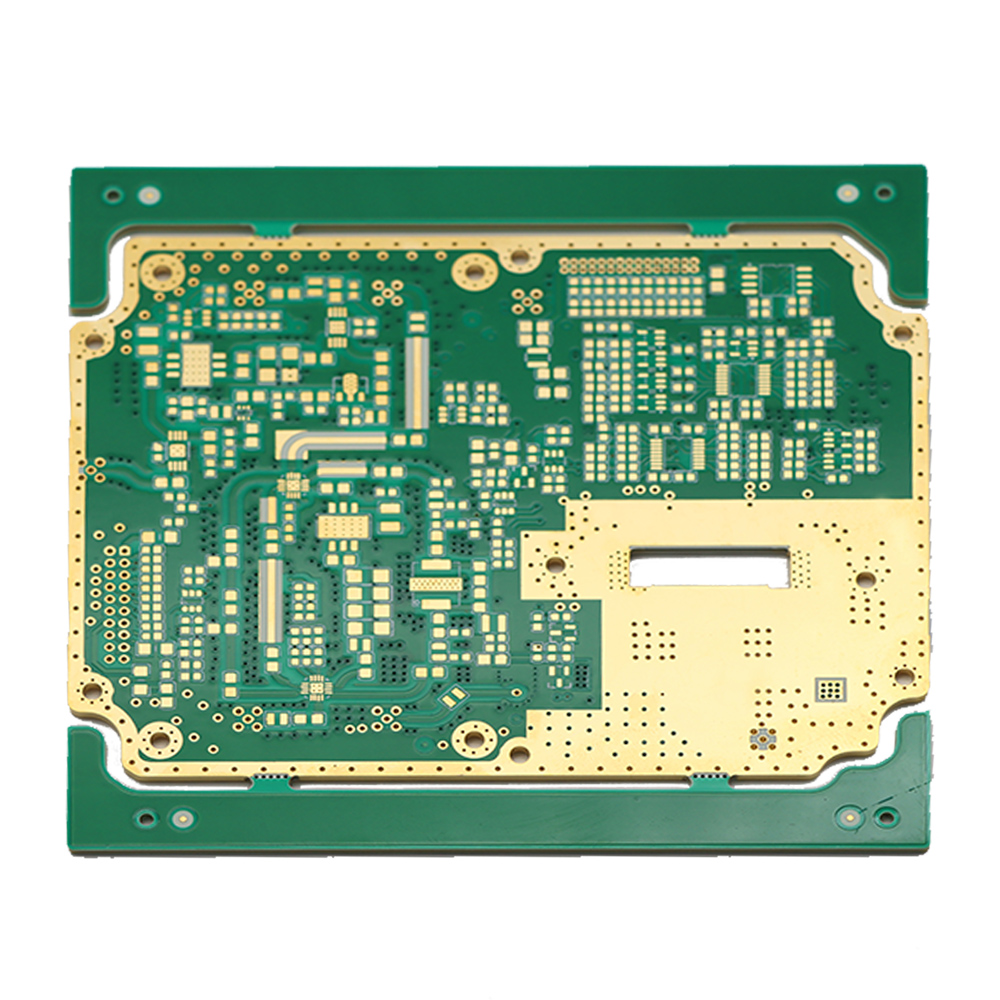0102030405
Channel Module PCBA
What is the role of channel modules in wireless communication?
Signal modulation and demodulation: The channel module modulates the original information signal (such as voice, video, or data) at the transmitting end into a form suitable for wireless transmission. Modulation is the process of loading information signals onto high-frequency carriers, enabling them to effectively propagate in the air. After reaching the receiving end, the channel module demodulates and restores these modulated signals to the original information, so that the receiving device can process and understand them.

Signal amplification: In wireless communication, signals attenuate during transmission, and the channel module includes amplifier components to enhance signal strength, ensuring that the signal can cover longer distances without losing too much information content.
Frequency conversion: Wireless communication systems typically operate within specific frequency bands. The channel module is responsible for converting signals to the correct frequency to comply with communication standards and regulations, and ensuring smooth signal transmission.
Filtering noise and interference: Due to the susceptibility of wireless signals to environmental noise and interference from other signals during propagation, the channel module reduces this interference through various filtering techniques, improving the quality and reliability of communication.
Signal allocation: In complex wireless communication systems, such as cellular networks or wireless local area networks (WLAN), channel modules can be responsible for coordinating and allocating different communication channels, ensuring that multiple users can communicate simultaneously without mutual interference.
Technical considerations
When designing and selecting appropriate channel modules, multiple technical factors need to be considered as following:
● Transmission distance: Determine the required signal amplification level and signal recovery capability.
● Signal type: Whether to process analog or digital signals requires corresponding modulation and demodulation techniques.
● Transmission medium: Choose the appropriate channel module design based on whether it is transmitted through air, cable, or fiber optic.
● Data rate: High data rates typically require higher performance channel modules to meet larger signal bandwidth requirements.
Introduction to RO4350B Application
RO4350B is a high-performance glass reinforced ceramic hydride composite material produced by Rogers Corporation. It is mainly designed for applications that require low Df and high frequency performance, and is very suitable for microwave and radio frequency (RF) applications. RO4350B material is widely used in various high-frequency electronic products due to its excellent electrical performance, thermal performance, and processing convenience. Here are some typical application products using RO4350B material as following:
RFID tags and readers: These devices are commonly used in logistics, retail, security and other industries. RO4350B can provide stable frequency characteristics and low Df, ensuring efficient data transmission.
Wireless communication base station: Wireless communication base stations need to process a large amount of high-frequency signals. The use of RO4350B material in PCB can help base station equipment achieve efficient signal transmission, reduce signal loss, and improve communication quality.
Microwave components and antennas: In the field of microwave and radio frequency, there are extremely high requirements for the Df characteristics of PCB materials. RO4350B is very suitable for these applications due to its low Dk and Df characteristics.
Automotive radar system: In the automotive industry, especially in the autonomous driving system, the radar system has strict requirements for materials. The high-frequency characteristics and reliability of RO4350B make it an indispensable material for manufacturing in vehicle radar systems.
Aerospace Electronics: Due to its excellent thermal stability and high-frequency characteristics, RO4350B is often used in satellite communication, navigation, and detection systems in the aerospace industry.
High speed data transmission lines: In network communication and data centers, RO4350B can be used to manufacture high-speed data transmission lines to meet the requirements of high-speed and high-capacity data transmission.
Power amplifier (PA) and low noise amplifier (LNA): In RF and microwave electronic systems, power amplifier and low noise amplifier are crucial components. The use of RO4350B can effectively reduce signal loss during amplification and improve overall system performance.
















